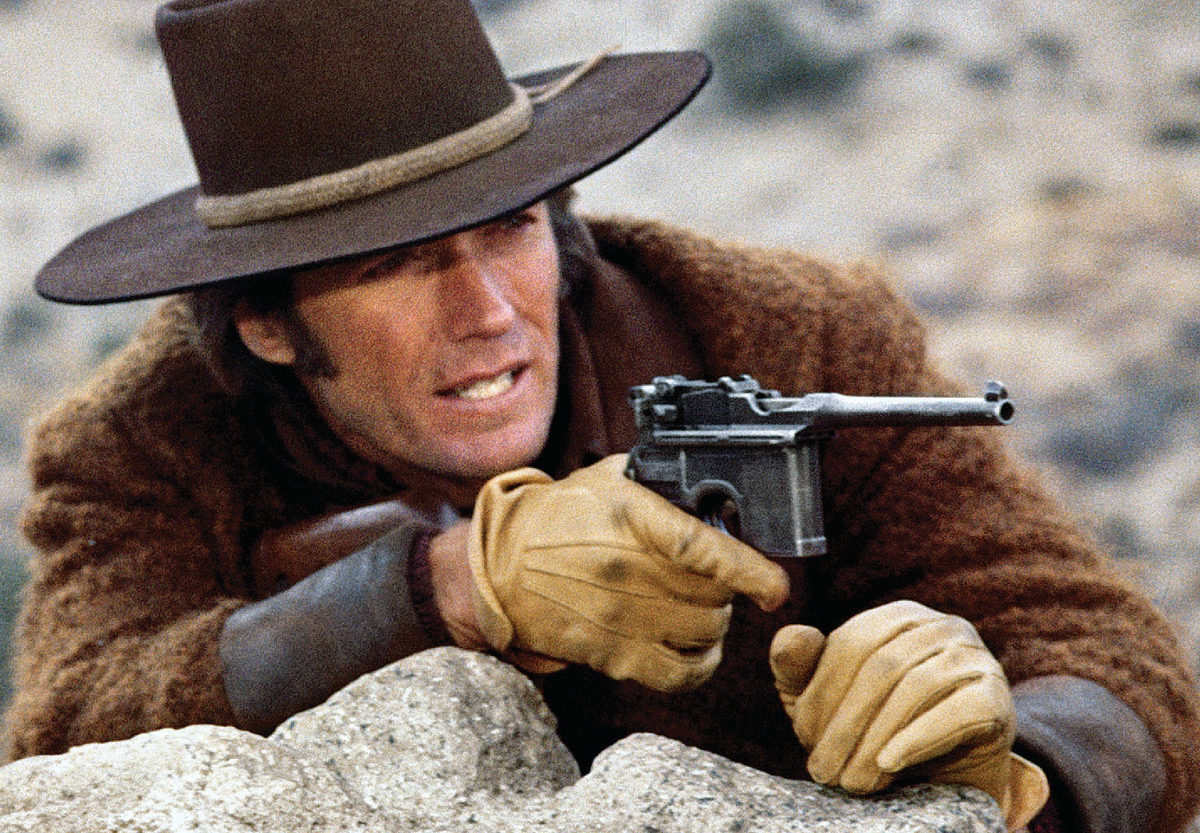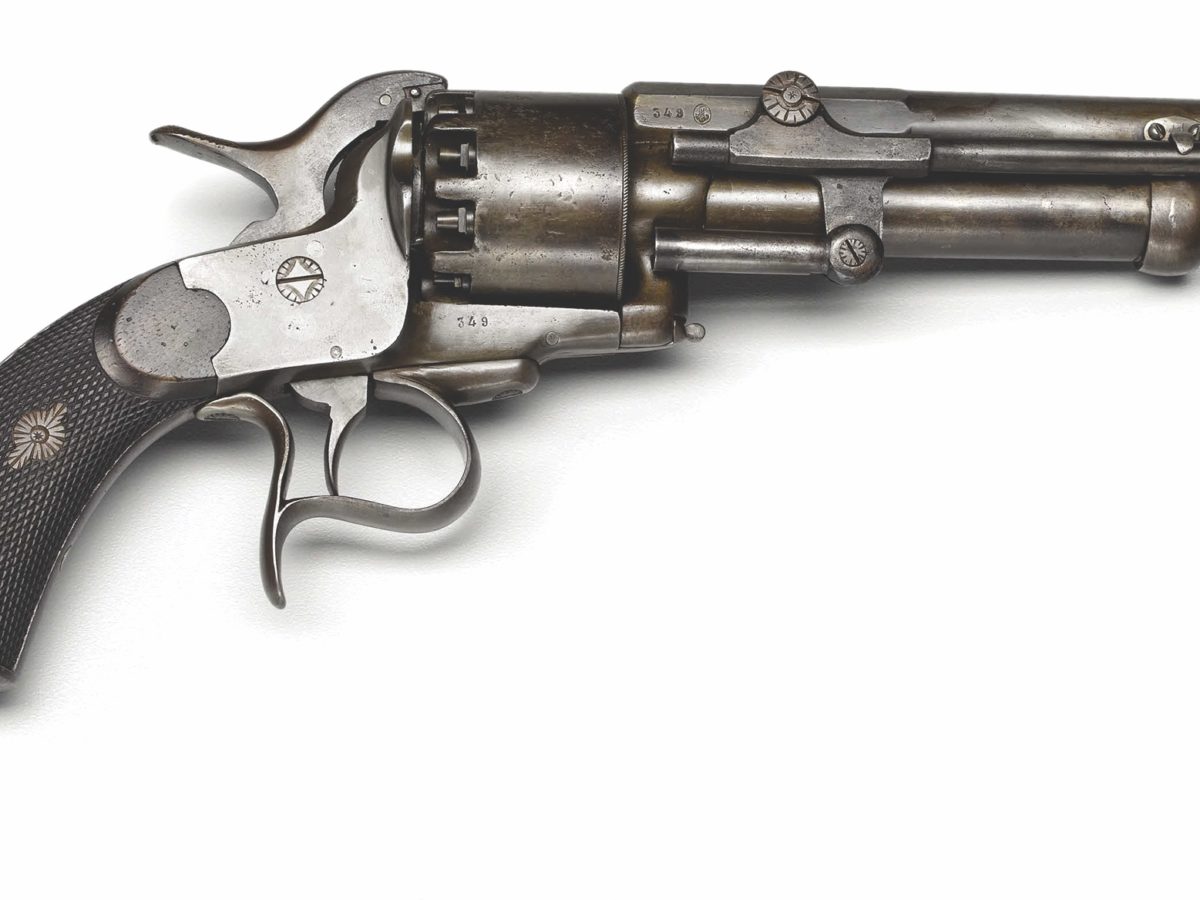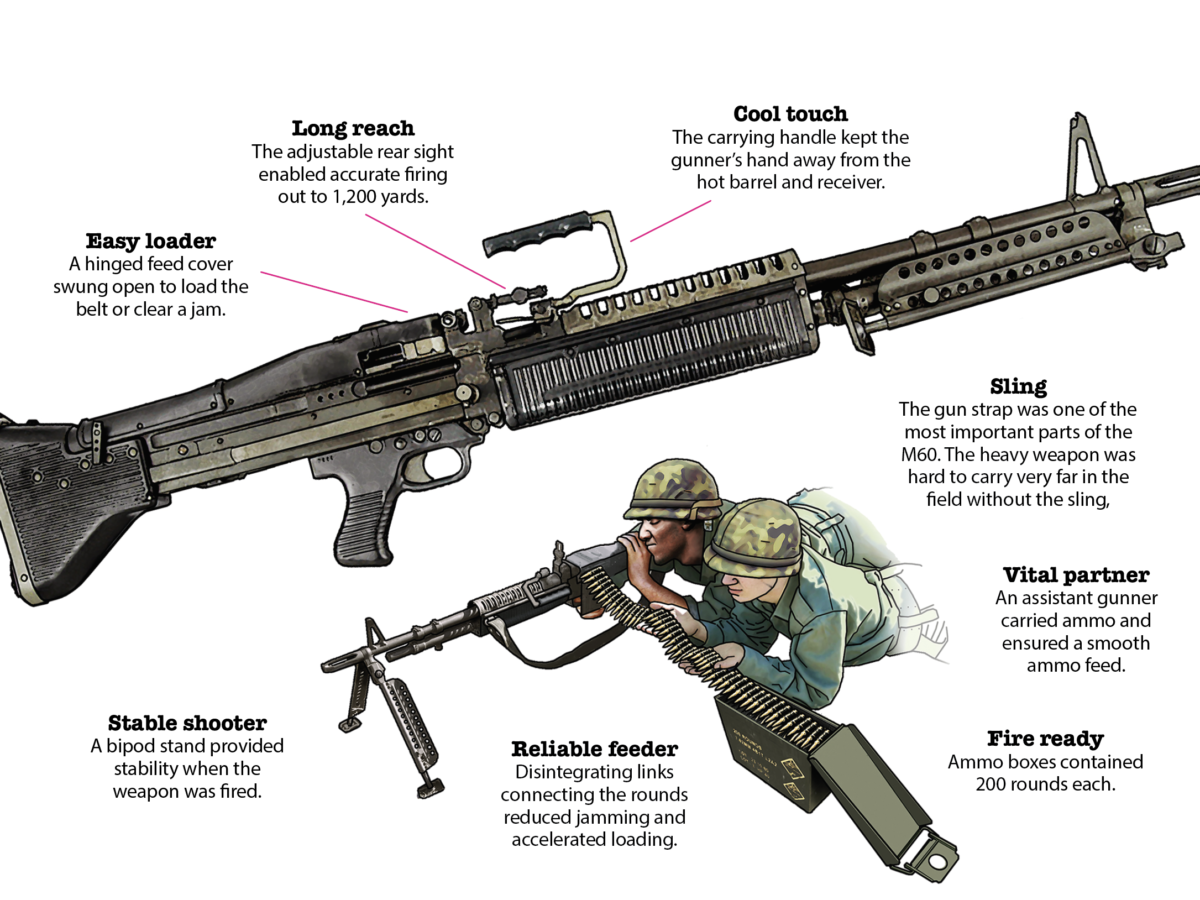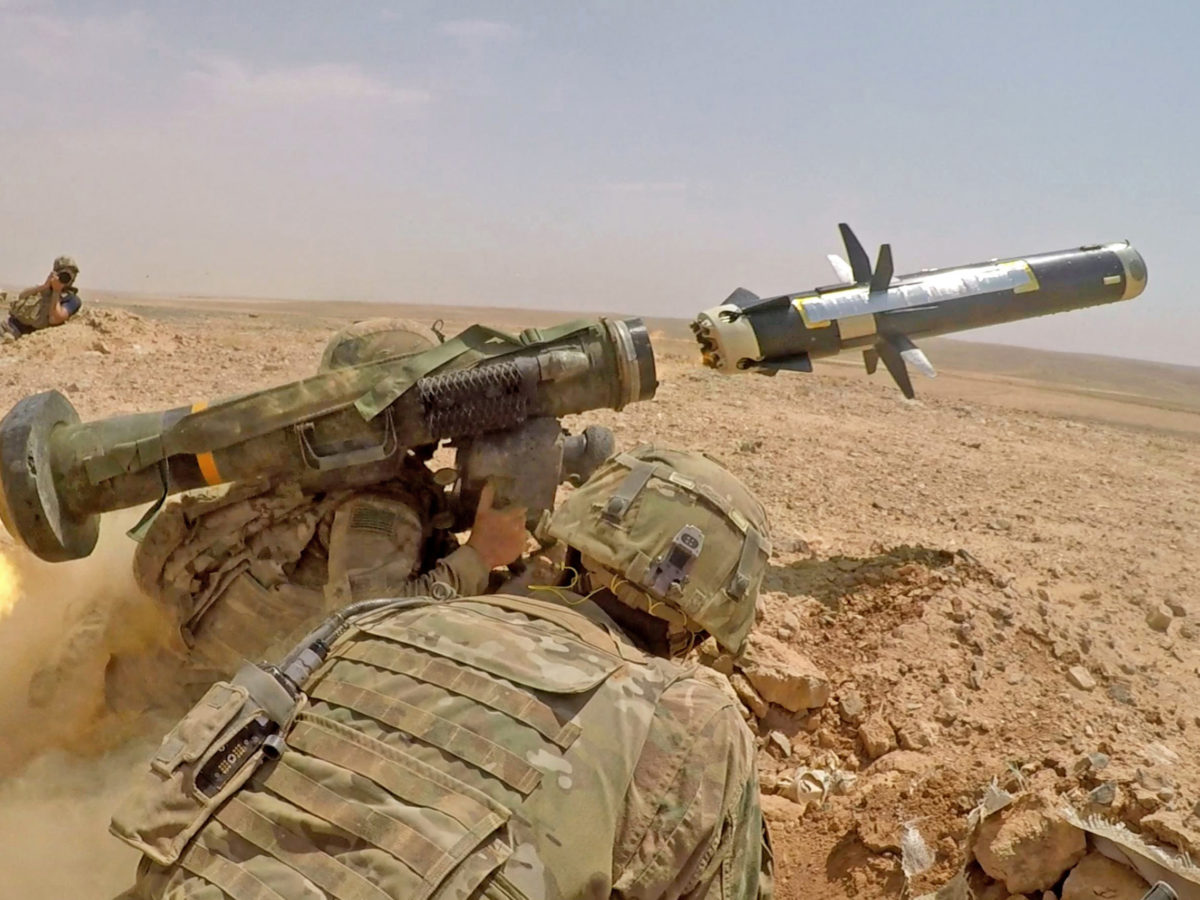Among aficionados of Old West firearms the handgun that first pops to mind is the .45-caliber Colt Single Action Army (aka “Peacemaker”), or perhaps the Colt 1851 Navy, followed by a host of percussion and cartridge revolvers from a score of American manufacturers. By the turn of the 20th century, however, foreign-made revolvers had also made their mark in the states and territories west of the Missouri. Notable among them were Britain’s double- and single-action Webleys and ubiquitous Belgian-made copies of the double-action British Bulldog. For a time such handguns gave their pricier, heavier counterparts — the Colts, Smith & Wessons, Merwin & Hulberts, etc. — a run for their money.
Another contender of note often goes overlooked, perhaps because it wasn’t introduced until 1896 and didn’t hit the U.S. market until 1901. But the self-loading, semiautomatic Mauser C96 pistol rates as one of history’s truly iconic firearms.
Made IN GERMANY
Brothers Fidel, Friedrich and Josef Feederle designed the C96 (Construktion 96) for their employer, Mauser, of Oberndorf am Neckar, Germany, though founder Peter Paul Mauser patented the pistol in his name only. Through 1937 the company turned out more than 1 million C96s.
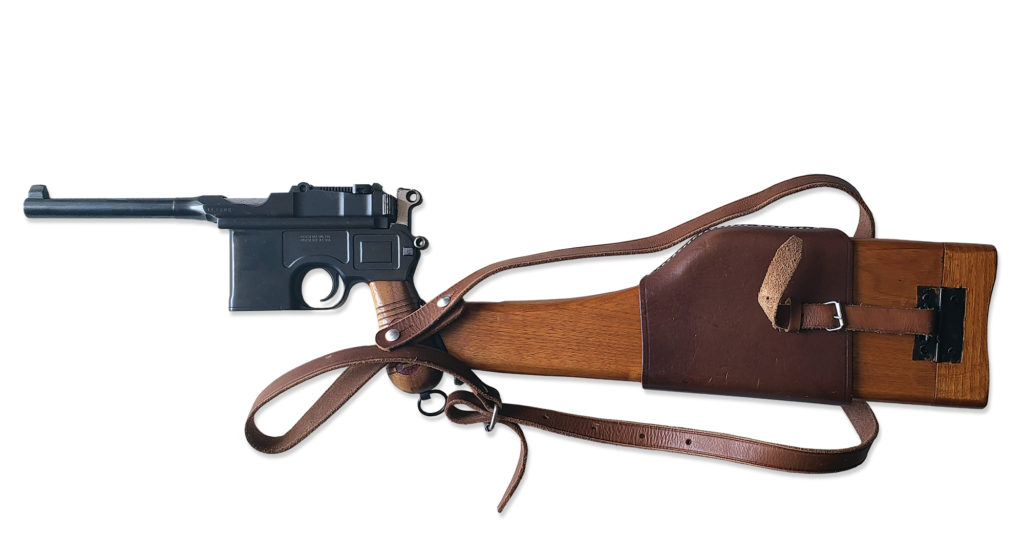
Chambered for the high-velocity 7.63×25 mm (.30-caliber) Mauser cartridge, the 10-shot pistol features an internal box magazine just forward of an integral trigger guard. The cartridges fit in 10-round stripper clips one inserts from the top of the magazine, enabling almost instantaneous loading. The unique design of its fluted wooden grips earned the C96 the nickname “Broomhandle.”
Recommended for you
MUst-Have in Europe
Noted for its long range and deep penetration, the C96 became a must-have weapon for many European officers, including a young Winston Churchill. He used a Broomhandle to telling effect against the Dervish “Fuzzy-Wuzzies” in Sudan in 1898, then against the Boers in South Africa the following year. Most Spanish officers (and a handful of Americans) carried the C96 during the 1898 Spanish-American War. Ultimately, officers in the military forces of three continents carried these pistols into 20th-century conflicts. Later versions were chambered in 9 mm Luger and .45 ACP, and copies were produced under license as well as pirated in the latter caliber in China and other countries.
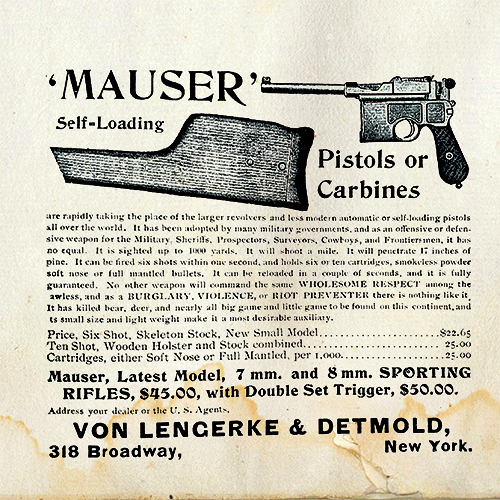
By 1901 Mauser was exporting the C96 to a willing, albeit curious, customer base in the United States. One of the primary importers was the German-American firm Von Lengerke & Detmold of New York City. Among the earliest ads for the pistol appeared in the January 1902 issue of Shooting and Fishing. Geared to the hunting, self-defense and general sporting crowd, the C96 was never an inexpensive arm, nor were its accessories and ammunition. While Colt soon made a splash with its M1902 and M1903 semiautomatic pistols, the Mauser and its fellow German entrant the Luger (produced until 1943) made dents in the American market.
WINNINg Over the West
Available with a detachable wooden shoulder stock that doubled as a holster, the rapid-firing C96 soon caught the attention of Western lawmen. An optional set of straps allowed the pistol to be carried as a shoulder rig, which appealed to officers on horseback, who didn’t like having a pistol flapping about on their waist when in the saddle. Several Texas Rangers bought the new foreign-made wonder gun. A photo taken around 1902 in Brownsville, Texas, shows Captain J. Abijah Brooks of Company A posing with his Mauser C96, complete with shoulder stock, beside seven of his Rangers, all of whom carry Colt Single Action Army revolvers and Winchester rifles. Another period photo captures the sheriff and three deputies of Anadarko County, Oklahoma Territory. Displayed prominently atop the deputies’ stacked rifles and six-shooters is the proud sheriff’s Broomhandle Mauser.
By those sunset years of the Old West, lawmen, outlaws and the general public had increasing access to more sophisticated arms designs. The Mauser stood out, not only for its design but also for its efficiency. Certainly, many regarded them as the greatest thing to come along since denim jeans. There were those, however, who considered them expensive novelties.
MOVIE Magic
A formidable weapon, the Mauser C96 most likely made an appearance in post-1900 gunfights in the real West. Its intimidating looks also garnered the Broomhandle roles in the “reel West.” One of the German versions chewed up the scenery (and several bad guys) in the 1972 film Joe Kidd. In that Western Clint Eastwood’s title character carries a Single Action Army as his primary weapon, while the Mauser belongs to New Mexican mercenary Lamarr Simms (portrayed by Don Stroud). Later in the film, as he evades a posse, Kidd gets hold of the C96 and fires some 30 rounds from its 10-round magazine before it locks empty. (No average Joe, indeed.) In 2015 the prop Mauser from that film, stock included, fetched just north of $1,800 on eBay. In the 1963 James Bond spy thriller From Russia With Love, the assassin played by Robert Shaw makes use of a C96.
Of course, as the Mauser came in so late in the game, it was never a contender for the title “The Gun That Won the West.” Had it been around in the 1870s and ’80s, one might argue the West could have been “won” much sooner. WW

